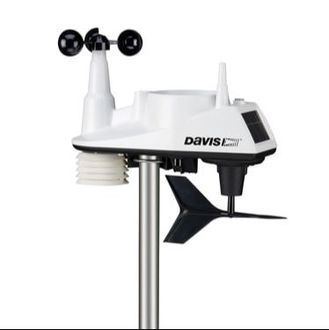
Personal Weather Stations
The use of a personal weather station (PWS) as a Skywarn spotter is extremely beneficial to being able to give quick accurate reports to the National Weather Service.
While it is perfectly acceptable to estimate wind speed using the Beaufort Scale, being able to give a measured windspeed is quicker, and more accurate as it is not a subjective as describing the appearance of wind effects.
Likewise, one could estimate rainfall based on what is plainly visible, but being able to measure rate of precipitation using a weather station is quicker and while not always as accurate as using a standard CoCoRaHs guage, definately a much drier option, and if sited correctly, can give readings that are good enough to make a report with confidence.
Most any weather station you can set up and afford is going to give you enough accuracy to quickly and confidently report your observations to the national weather service, but personal weather stations always involve some type of trade-off. A very accurate weather station with components that are properly shielded and calibrated is obtainable but does not come cheap.
Weather Underground gives a number of options on their site along with reviews and I recommend you read up before purchasing your PWS. If however, you already have one, rest assured that whatever model you have purchased will serve you extremely well.
I highly recommend that if you are able to connect to Weather Underground with your PWS, you do so. The main reason for this is that it allows you to compare your readings to other PWSs around you. While you never know if others have correctly sited their units, if you find that you are constantly outside of the range of those of nearby stations, you've probably got a siting problem.
The use of a personal weather station (PWS) as a Skywarn spotter is extremely beneficial to being able to give quick accurate reports to the National Weather Service.
While it is perfectly acceptable to estimate wind speed using the Beaufort Scale, being able to give a measured windspeed is quicker, and more accurate as it is not a subjective as describing the appearance of wind effects.
Likewise, one could estimate rainfall based on what is plainly visible, but being able to measure rate of precipitation using a weather station is quicker and while not always as accurate as using a standard CoCoRaHs guage, definately a much drier option, and if sited correctly, can give readings that are good enough to make a report with confidence.
Most any weather station you can set up and afford is going to give you enough accuracy to quickly and confidently report your observations to the national weather service, but personal weather stations always involve some type of trade-off. A very accurate weather station with components that are properly shielded and calibrated is obtainable but does not come cheap.
Weather Underground gives a number of options on their site along with reviews and I recommend you read up before purchasing your PWS. If however, you already have one, rest assured that whatever model you have purchased will serve you extremely well.
I highly recommend that if you are able to connect to Weather Underground with your PWS, you do so. The main reason for this is that it allows you to compare your readings to other PWSs around you. While you never know if others have correctly sited their units, if you find that you are constantly outside of the range of those of nearby stations, you've probably got a siting problem.
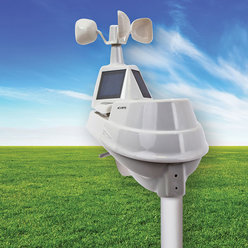
Siting a Personal Weather Station
The quality technology available in most modern PWSs is such that you are going to get very little variance in the accuracy of the actual readings. Most of the cost difference you will see comes from build quality, reliability, and let's face it the name on the box. That being said, you'll get the most accurate results if your PWS is sited correctly.
Below are some best practices for proper siting. While understandably, not everyone is going to have the space or resources to assure 100% perfection, take what you can to assure you are as accurate as possible given your circumstances.
The quality technology available in most modern PWSs is such that you are going to get very little variance in the accuracy of the actual readings. Most of the cost difference you will see comes from build quality, reliability, and let's face it the name on the box. That being said, you'll get the most accurate results if your PWS is sited correctly.
Below are some best practices for proper siting. While understandably, not everyone is going to have the space or resources to assure 100% perfection, take what you can to assure you are as accurate as possible given your circumstances.
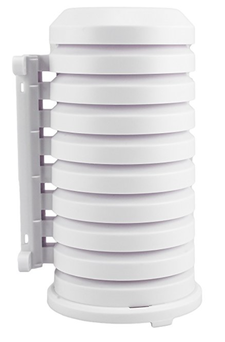 Radiation Screen
Radiation Screen
Temperature
Temperature is the one reading that gave me the most trouble. The reason being there are several factors that determine how a thermometer reads the actual temperature. The National Weather Service measures temperature "in the shade" with plenty of ventilation. Does that describe the siting of your thermometer? Especially in the hot sun of Arizona, the biggest problem is radiated heat. Here are some tips for ensuring an accurate reading:
Humidity
Nearby plants or bodies of water (i.e. swimming pools) can affect the readings of your hygrometer. Make sure you are keeping your sensor at least 50 feet from the nearest body of water.
Temperature is the one reading that gave me the most trouble. The reason being there are several factors that determine how a thermometer reads the actual temperature. The National Weather Service measures temperature "in the shade" with plenty of ventilation. Does that describe the siting of your thermometer? Especially in the hot sun of Arizona, the biggest problem is radiated heat. Here are some tips for ensuring an accurate reading:
- The temperature sensor should never receive direct sunlight.
- The temperature sensor should be well-ventilated with adequate air-flow
- The optimum height of the temperature sensor is 4'-6'
- If the temperature sensor must be placed on the rooftop, ensure that it is at least five feet from the top of the roof.
Humidity
Nearby plants or bodies of water (i.e. swimming pools) can affect the readings of your hygrometer. Make sure you are keeping your sensor at least 50 feet from the nearest body of water.
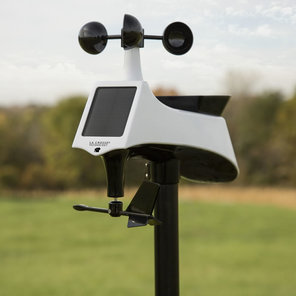
Rain Collector
The rain collector on a PWS (and even the more robust and expensive automatic rain gauges used by the NWS) can be off by as much as 25% compared to the NWS 8" and CoCoRahs 4" gauges. This is why they are not authorized for use in CoCoRaHS with the exception of being used as a back-up or for reporting precipitation when you are not at home. Even then, you must make a note in the comments field indicating that you are using an automated sensor.
That said, the information collected by these sensors is valuable nonetheless (otherwise why would the NWS depend upon these very type of sensors when issuing watches and warnings). On many occasions I have reported numbers from my automatic rain guage to the NWS that aided in the decision to issue a flash flood warning. The fact that my CoCoRaHS guage showed a slightly different rain total than the PWS was not a factor - not having to go out into the driving rain, hail and lightning to take the measurement was well worth the cost of the station.
Though we know we won't get 100% certainty with these gauges, we want to assure that we do get the very best measurement possible. Here's how:
The rain collector on a PWS (and even the more robust and expensive automatic rain gauges used by the NWS) can be off by as much as 25% compared to the NWS 8" and CoCoRahs 4" gauges. This is why they are not authorized for use in CoCoRaHS with the exception of being used as a back-up or for reporting precipitation when you are not at home. Even then, you must make a note in the comments field indicating that you are using an automated sensor.
That said, the information collected by these sensors is valuable nonetheless (otherwise why would the NWS depend upon these very type of sensors when issuing watches and warnings). On many occasions I have reported numbers from my automatic rain guage to the NWS that aided in the decision to issue a flash flood warning. The fact that my CoCoRaHS guage showed a slightly different rain total than the PWS was not a factor - not having to go out into the driving rain, hail and lightning to take the measurement was well worth the cost of the station.
Though we know we won't get 100% certainty with these gauges, we want to assure that we do get the very best measurement possible. Here's how:
- Make sure that you have at least 5' between the sensor and your nearest tall structure.
- If the structure is close to 5' away, make sure that it is not taller than 10'
- If possible the guage should be between 2 and 4 feet off the ground (not always possible when they are integrated with the anemometer).
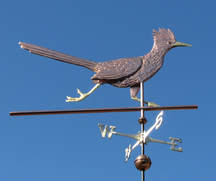
Wind Speed and Direction
Standard wind measurement with an anemometer and vane should be taken at around 30 feet above the ground. So a nice tall antenna tower might not be a bad option for a stand alone wind sensor. Most stations come with an integrated rain collector/anemometer. If yours is this type, the accuracy of rain your rain collector will be negatively impacted by the cross winds at 30'. For integrated rain/wind sensors it is recommended that they be placed 18'-20' high (the height of the average rooftop).
That about sums up this tutorial. As mentioned earlier, these are best-practices and not everyone is going to have the space or the resources to site their station perfectly, but a little forethought goes a long way toward getting the most accurate results given your specific situation.
Standard wind measurement with an anemometer and vane should be taken at around 30 feet above the ground. So a nice tall antenna tower might not be a bad option for a stand alone wind sensor. Most stations come with an integrated rain collector/anemometer. If yours is this type, the accuracy of rain your rain collector will be negatively impacted by the cross winds at 30'. For integrated rain/wind sensors it is recommended that they be placed 18'-20' high (the height of the average rooftop).
- Your anemometer should be the tallest thing around (though not always possible - do your best).
- Never place it in an alleyway or anywhere that the surrounding structures will create a wind tunnel skewing your readings.
That about sums up this tutorial. As mentioned earlier, these are best-practices and not everyone is going to have the space or the resources to site their station perfectly, but a little forethought goes a long way toward getting the most accurate results given your specific situation.
Share your comments/experience on siting a personal weather station.

